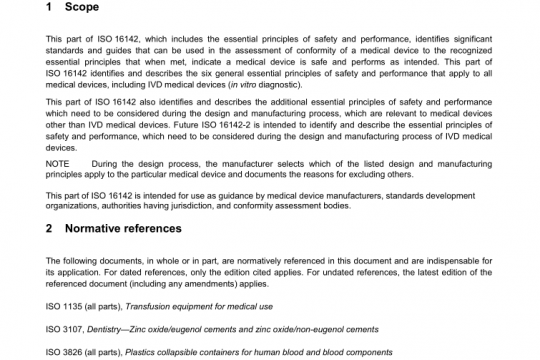AAMI PC76 pdf free download
AAMI PC76 pdf free download.Active implantable medical devices—Requirements and test protocols for safety of patients with pacemakers and ICDs exposed to magnetic resonance imaging.
8 Protection from harm to the patient from lead electrode heating 8.1 General This MRI RF-induced lead electrode heating assessment is derived from AAMI/ISO TIR10974 and is based on Clause 8, Tier 3, from the second edition. At the present time this is the only tier that is relevant and applicable for traditional transvenous cardiac pacemaker, ICD, and CRT systems. Patient harm due to RF induced lead electrode heating is a function of absolute temperature, duration of the temperature, and individual implant considerations. RF induced heating of tissues surrounding the lead electrodes may result in local tissue temperature rises, leading to tissue damage or a reduction in the ability of the implanted device to deliver therapy. Both of these shall be evaluated to assess patient safety. Determining the rise in local tissue temperature due to interaction of a cardiac lead with the RF field of an MR scanner is a complex process that depends on device design, lead design, MR scanner technology (RF coil and pulse sequence design), patient size, anatomy, position, device location, lead path, and tissue properties. This complex environment can produce in vivo temperature variation spanning several orders of magnitude.Two components are necessary to assess the safety of RF induced lead electrode heating. a) The first component is the RF lead modelling framework, which includes: a set of RF birdcage coil models representative of the targeted MR system scanner platforms, a set of human body models representative of the target population, RF models of the implantable cardiac leads, and a set of lead paths that include the extremes of clinical practice. This modelling framework is described in detail in Clause 8.3. The output of the RF lead modelling framework is a set of computer simulation results that define a probability distribution function of the power deposition at the lead to tissue interface. b) The second component assesses the impact of the power deposition on the associated tissue. The two methods for evaluating the tissue impact are described briefly below and in more detail in Clauses 8.6 through 8.8. 1. CEM43 is a temperature versus time methodology that has been used to assess tissue damage in a variety of tissues throughout the human body. 2. A change in pacing capture threshold (∆PCT) has been correlated to cardiac tissue damage in the vicinity of the lead tip electrode.The probability distribution function of power is combined with the chosen tissue damage evaluation method to predict the probability of tissue damage. 8.2 Hotspot determination In this document hotspots are defined as the pace/sense electrodes for the pacemakers and cardiac resynchronization applications. For a typical ICD lead the high voltage electrodes have been demonstrated not to be a hot spot and therefore can be excluded. Furthermore, if the ring electrode electromagnetic model, obtained from a validated method, predicts a 99 th percentile in vitro equivalent temperature rise or RF power deposition <1/4 of the 99 th percentile validated in vitro equivalent tip temperature rise or RF power deposition, then the ring electrode can be excluded as a hotspot. Finally, for a cardiac resynchronization with left sided leads with multiple electrodes, each electrode is considered a hotspot. Each hotspot requires a validated electromagnetic model and an in vivo power deposition analysis. 8.3 MRI RF lead modelling framework The objective of the RF lead modelling framework is to define all required components of the modelling environment and the range of attributes that shall be considered for each component.AAMI PC76 pdf download.
Other IEC Standards
-

ANSI AAMI ISO 16142-1 pdf free download – non-IVD medical devices and guidance on the selection of standards
AAMI standards list DOWNLOAD -

ANSI AAMI ISO 16142-2 pdf free download – General essential principles and additional specifc essential principles
AAMI standards list DOWNLOAD


